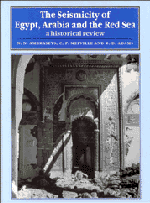1 - Introduction
Published online by Cambridge University Press: 18 December 2009
Summary
Area of study
Our investigation is concerned with a large, irregular area defined at its greatest extent by the co-ordinates 0°–34° N latitude and 10°–60° E longitude (see Figure 1.1). This area is centred on the Red Sea. To the east, it incorporates the whole of the Arabian Peninsula, bounded to the northeast by southern Iraq and the Persian Gulf and to the south by the top of the Horn of Africa. We have excluded the parts of Ethiopia and Somalia south of 10° N and east of 40° E. To the west, the area includes the whole of Egypt, northern Ethiopia, and most of Sudan and Libya. Central Africa south of 20° N and west of 25° E is excluded. To the north, the land boundary is fixed at the top of the Dead Sea (32° N).
The main focus of our attention is on the regions bordering the Red Sea, namely the Hejaz and Yemen to the east, Egypt and Ethiopia to the west. This is a crucial area in the history of the Middle East, and also one of contrasts in terms of population, topography and seismotectonic activity. We have extended our survey beyond this central region to ensure that its seismicity is located in a wider context. It is useful to know the full extent of areas of both high and relatively low seismicity, and to try to include their boundaries within an artificially delineated study area. Similarly, earthquakes do not respect the political borders shown on Figure 1.1; besides, such lines are of recent origin, and sometimes equally unnatural. They are also subject to change.
- Type
- Chapter
- Information
- The Seismicity of Egypt, Arabia and the Red SeaA Historical Review, pp. 1 - 18Publisher: Cambridge University PressPrint publication year: 1994
- 1
- Cited by



